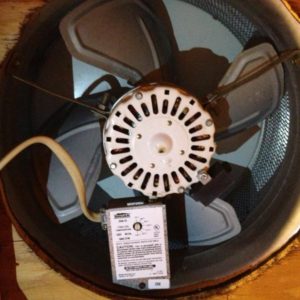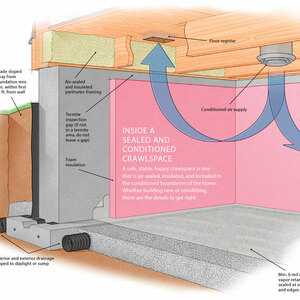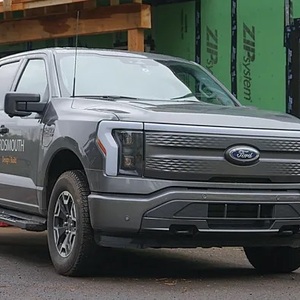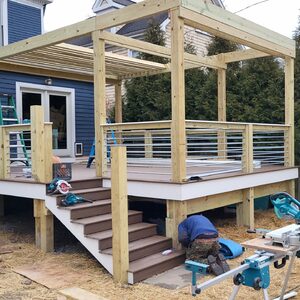I have a thermostat-controlled attic ventilation fan that is locking up. The thermostat clicks, the fan hums but does not turn. A flick with my finger gets it started and then it cooks right along.
Is this something that’s easily fixed or are we talking replacement? Fan photo included
Thanks,
Tom



















Replies
These things eventually go south (after 5-10 years) because the bearing lube gums up. You can sometimes take down the fan and work some more lube into the bearings (trickier than it sounds), but it's a lot of work for only a 1-2 year fix.
Generally you're better off replacing the fan or converting to passive ventilation.
Once they get to that point you may as well give up. You can clean and oil the motor but I've never had one that ran long once it had seized. Take the motor to Grainger and they'll fix you right up.
Thanks guys
Thanks for the feedback. Just a side note, the fan does spin quite easily, and it doesn't seem to have any bearing grind or rumble. The problem is the motor has trouble initiating the spin. Perhaps what you're saying is that the worn bearings are the cause of that problem. Here's a little video of what it looks like.
Bottom line though, probably replace this puppy? It may not be worth the cost of having the motor looked at.
Tom
It can be a problem with starting, due to a bad start mechanism. But small motors like that are usually "shaded pole", with no separate start winding, no capacitor, no start switch. (You don't see a capacitor hiding in or behind the temp switch do you? I'm assuming that black thing I see at about 5 oclock is a thermal fuse.) So there's not much to go wrong (and nothing you can replace). Occasionally, however, the shaded pole windings on the stator short out and cause poor starting.
You can figure out whether it's bearings or starter mechanism fairly simply (though it's more an intellectual exercise than a diagnostic): Start and run the motor for maybe 3 minutes, then stop it for a minute or so. Then turn on again and see if it starts on its own. If it starts it's likely gummed bearings, if not probably a shorted shaded pole (or other start mechanism).
(Anyway, I gave up on roof-mounted fans about ten years ago -- they're just too much of a PITA. The heat gets to them and destroys them in about 5 years, and they're very difficult to replace.)
Passive option?
Thanks again for the thoughtful response. The passive option is simply to disable the fan?
Tom
"Passive" would be to install
"Passive" would be to install vents along the ridge, either a ridge vent strip or several mushroom vents.
Passive it is!
Good deal. I've already got ridge vents, so I imagine that the fan was just a backup for super hot days. Thanks everyone for taking the time to answer my questions.
Tom
If you've got (unblocked) ridge vents the fan wasn't doing much good anyway.